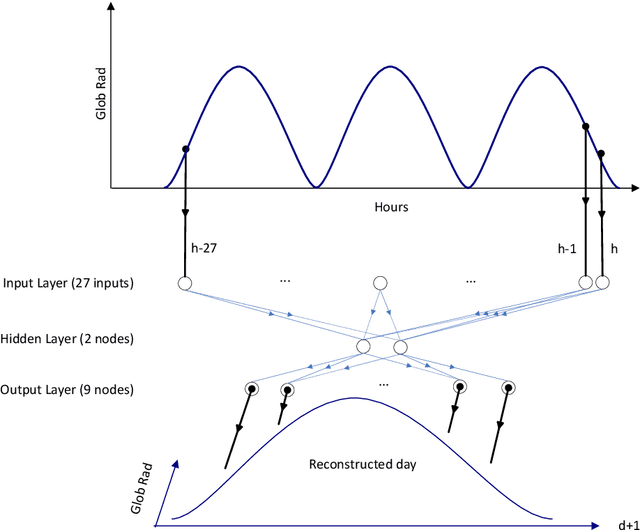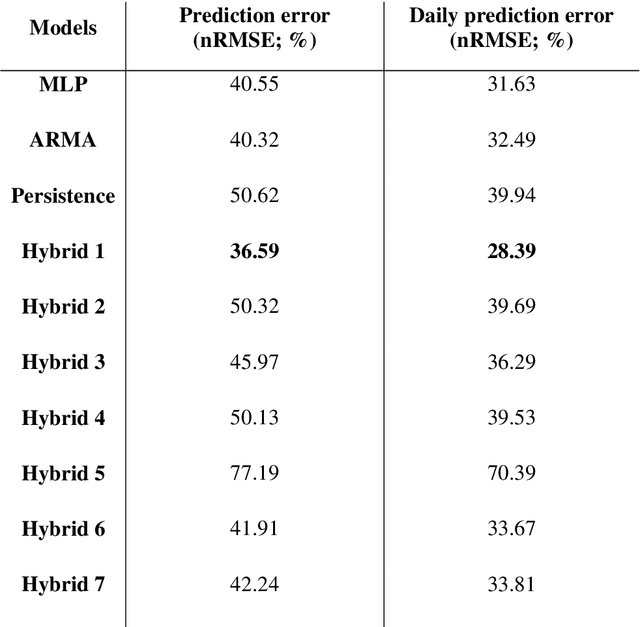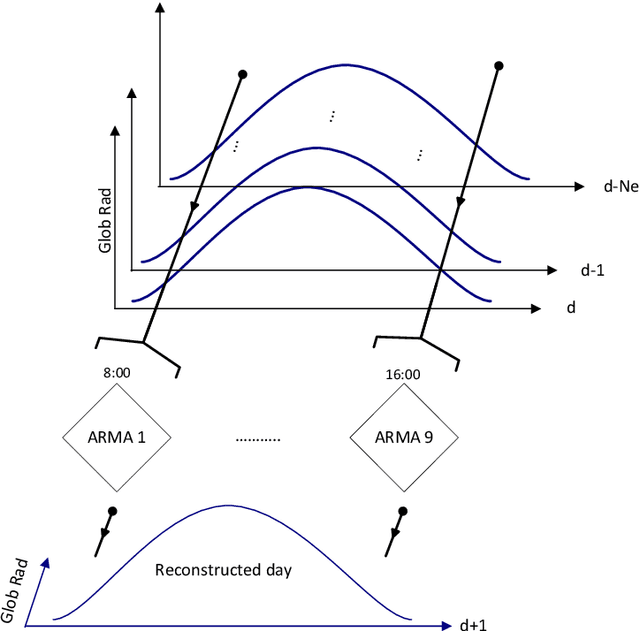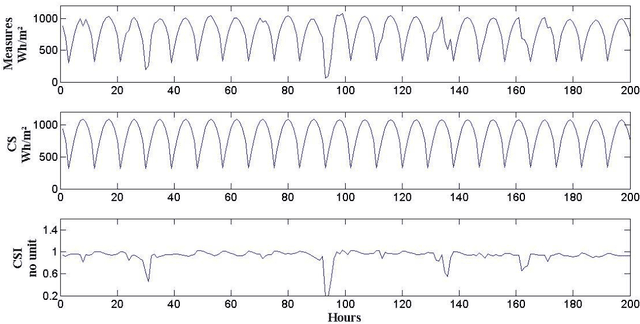Bayesian rules and stochastic models for high accuracy prediction of solar radiation
Paper and Code
Sep 18, 2013



It is essential to find solar predictive methods to massively insert renewable energies on the electrical distribution grid. The goal of this study is to find the best methodology allowing predicting with high accuracy the hourly global radiation. The knowledge of this quantity is essential for the grid manager or the private PV producer in order to anticipate fluctuations related to clouds occurrences and to stabilize the injected PV power. In this paper, we test both methodologies: single and hybrid predictors. In the first class, we include the multi-layer perceptron (MLP), auto-regressive and moving average (ARMA), and persistence models. In the second class, we mix these predictors with Bayesian rules to obtain ad-hoc models selections, and Bayesian averages of outputs related to single models. If MLP and ARMA are equivalent (nRMSE close to 40.5% for the both), this hybridization allows a nRMSE gain upper than 14 percentage points compared to the persistence estimation (nRMSE=37% versus 51%).
 Add to Chrome
Add to Chrome Add to Firefox
Add to Firefox Add to Edge
Add to Edge